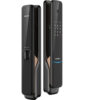Sophos published How Ransomware Attacks, a playbook for defenders that explains how ransomware variants attack and impact victims. The playbook complements the 2020 Threat Report released on Nov. 4, and features a detailed analysis of 11 of the most prevalent and persistent ransomware families, including Ryuk, BitPaymer and MegaCortex.
The research by SophosLabs highlights how ransomware tries to slip unnoticed past security controls by abusing trusted and legitimate processes, and then harnesses internal systems to encrypt the maximum number of files and disable backup and recovery processes before an IT security team catches up.
The tools and techniques covered by the playbook include:
The main modes of distribution for the major ransomware families.Ransomware is typically distributed in one of three ways: as a cryptoworm, which replicates itself rapidly to other computers for maximum impact (for example, WannaCry); as ransomware-as-a-service (RaaS), sold on the dark web as a distribution kit (for example, Sodinokibi); or by means of an automated active adversary attack, where attackers manually deploy the ransomware following an automated scan of networks for systems with weak protection. This automated, active attack style was the most common approach seen among the top families listed in the report.
Cryptographic code signing ransomware with a bought or stolen legitimate digital certificate in an attempt to convince some security software the code is trustworthy and doesn’t need analysis.
Privilege escalation using readily available exploits, like EternalBlue, to elevate access privileges. This allows the attacker to install programs such as remote access tools (RATs), and to view, change or delete data, create new accounts with full user rights, and disable security software.
Lateral movement andhunting across the network for file and backup servers while staying under the radar in order to unleash the full impact of the ransomware attack. Within an hour, attackers can create a script to copy and execute the ransomware on networked endpoints and servers. In order to speed up the attack, the ransomware might prioritize data on remote/shared drives, target smaller document sizes first, and run multiple encryption processes at the same time.
Remote attacks. The file servers themselves are often not infected with the ransomware. Instead, the threat typically runs on one or more compromised endpoints, abusing a privileged user account to remotely attack documents, sometimes via the Remote Desktop Protocol (RDP) or targeting remote monitoring and management (RMM) solutions typically used by managed service providers (MSP) to manage customers’ IT infrastructure and/or end-user systems.
File encryption and renaming. There are a number of different methods for file encryption, including simply overwriting the document, but most are accompanied by either the deletion of the backup or original copy to hinder the recovery process.
The playbook explains how these and other tools and techniques are implemented by 11 ransomware families: WannaCry, GandCrab, SamSam, Dharma, BitPaymer, Ryuk, LockerGoga, MegaCortex, RobbinHood, Matrix and Sodinokibi.
“The creators of ransomware have a pretty good grasp of how security software works and adapt their attacks accordingly. Everything is designed to avoid detection while the malware encrypts as many documents as possible as quickly as possible and makes it hard, if not impossible, to recover the data. In some cases, the main body of the attack takes place at night when the IT team is at home asleep. By the time the victim spots what’s going on, it is too late. It is vital to have robust security controls, monitoring and response in place covering all endpoints, networks and systems, and to install software updates whenever they are issued,” said Mark Loman, director of engineering for threat mitigation technology at Sophos, and the author of the report.
How to protect against ransomware
- Check that you have a full inventory of all devices connected to your network and that any security software you use on them is up to date
- Always install the latest security updates, as soon as practicable, on all the devices on your network
- Verify that your computers are patched against the EternalBlue exploit used in WannaCry
- Keep regular backups of your most important and current data on an offline storage device as this is the best way to avoid having to pay a ransom when affected by ransomware
- Administrators should enable multi-factor authentication on all management systems that support it, to prevent attackers disabling security products during an attack
- There is no silver bullet to security, and a layered security model is the best practice all businesses need to implement
- For example, Sophos Intercept X employs a comprehensive defense-in-depth approach to endpoint protection, combining multiple leading next-gen techniques to deliver malware detection, exploit protection and built-in endpoint detection and response (EDR)












































































































